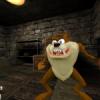I'm setting up a particle interaction ‘simulation’. It features spherical emitters, circular emitters, and beam emitters.
The full code is at: https://github.com/sjhalayka/particle
How much stronger is the interaction when it's a beam vs a sphere?
The pertinent code is:
enum program_mode { sphere_mode, circle_mode, beam_mode };
program_mode mode = sphere_mode;
//program_mode mode = circle_mode;
//program_mode mode = beam_mode;
for (size_t i = 0; i < num_rays; i++)
{
double u = rand() / static_cast<double>(RAND_MAX);
double v = rand() / static_cast<double>(RAND_MAX);
double theta = 2 * pi * u;
double phi = acos(2 * v - 1.0);
vector_3 pos;
if (mode == sphere_mode)
{
// get pseudorandom vector on unit sphere
// 3D
pos.x = cos(theta) * sin(phi);
pos.y = sin(theta) * sin(phi);
pos.z = cos(phi);
}
else if (mode == circle_mode)
{
// get pseudorandom vector on unit circle
// 2D
pos.x = cos(theta);
pos.y = sin(theta);
pos.z = 0;
}
else if (mode == beam_mode)
{
// 1D
pos.x = 0;
pos.y = 1;
pos.z = 0;
}
ray_dirs.push_back(pos);
float t = 0;
if (line_sphere_intersect(
vec3(0, 0, 0),
vec3(pos.x, pos.y, pos.z),
vec3(test_particle_pos.x, test_particle_pos.y, test_particle_pos.z),
test_particle_radius,
t))
{
intersection_positions.push_back(ray_dirs[i] * t);
}
}
cout << fixed << intersection_positions.size() / static_cast<double>(num_rays) << endl;
if (mode == sphere_mode)
{
// 3D
cout << intersection_positions.size() * test_particle_pos.self_dot() << endl;
}
else if (mode == circle_mode)
{
// 2D
cout << intersection_positions.size() * test_particle_pos.length() << endl;
}
else if (mode == beam_mode)
{
// 1D
cout << intersection_positions.size() << endl;
}










